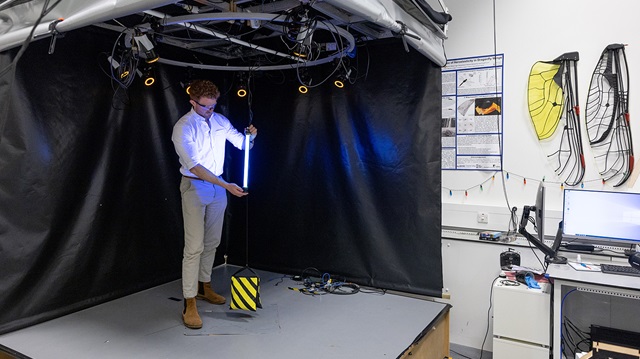Believe it or not, that old saying about being drawn to something “like a moth to a flame” may not be accurate. It seems that bugs – the flying kind – are not attracted to light, nor the heat given off by lights and fire, say researchers from the Florida Museum of Natural History.
A small team of international scientists from the Florida Museum of Natural History working in a forest in Costa Rica employed high-resolution motion capture in the laboratory, and stereo-videography in the field, to reconstruct the 3D kinematics of insect flights around artificial lights. Contrary to the expectation of attraction, they said, insects do not steer directly toward the light. Instead, insects turn their backsides toward the light, generating flight bouts perpendicular to the source. Their research was published in Nature Communications.
So, what causes flies and moths and all the other insects to be attracted to the light?
Will you offer us a hand? Every gift, regardless of size, fuels our future.
Your critical contribution enables us to maintain our independence from shareholders or wealthy owners, allowing us to keep up reporting without bias. It means we can continue to make Jewish Business News available to everyone.
You can support us for as little as $1 via PayPal at office@jewishbusinessnews.com.
Thank you.
Well, they use light to navigate. In the daytime, all light emanates from above us, from the sky. So when flies fly they know up from down by keeping their tops turned to the sun and their bottoms face down to the ground. This is how flying insects navigate.
But at night, without the sun shining, they get confused by artificial light and fire. They see the light and mistakenly believe that it is above them. This is why they fly around a light source and while they do so they always face upwards, with their backs to the light.
“You watch the videos in slow motion and see it happening again and again,” said Yah Sondhi, a recent graduate of Florida International University, currently a postdoctoral researcher at the Florida Museum of Natural History. “Maybe when people notice it, like around their porchlights or a streetlamp, it looks like they are flying straight at it, but that’s not the case.”
“This has been a prehistorical question. In the earliest writings, people were noticing this around fire,” Jamie Theobald, Florida International University associate professor of biology who took part in the research said. “It turns out all our speculations about why it happens have been wrong, so this is definitely the coolest project I’ve been part of.”
About their research, Sondhi added, “being persistent and finding the right people, we came up with an answer none of us really thought of, but that’s so important to increasing awareness about how light impacts insect populations and informing changes that can help them out.”




